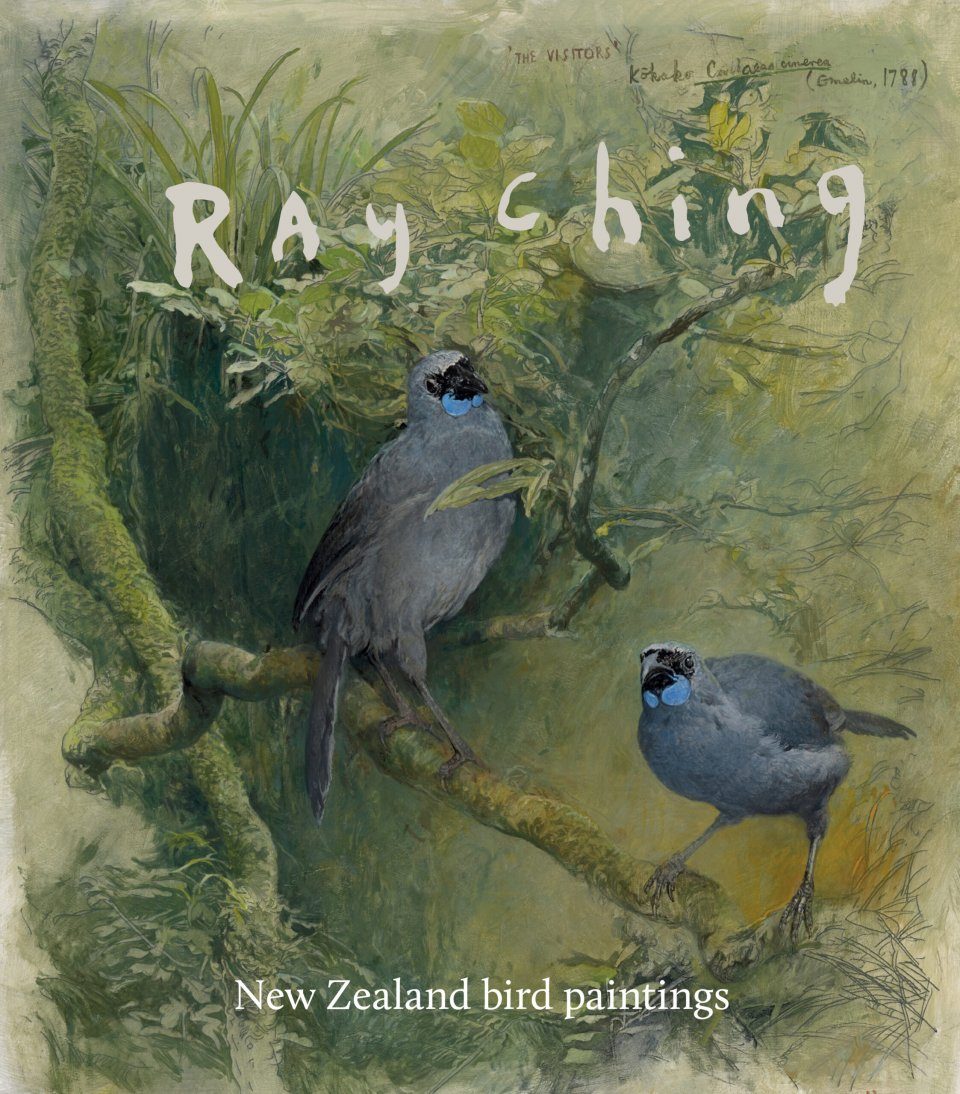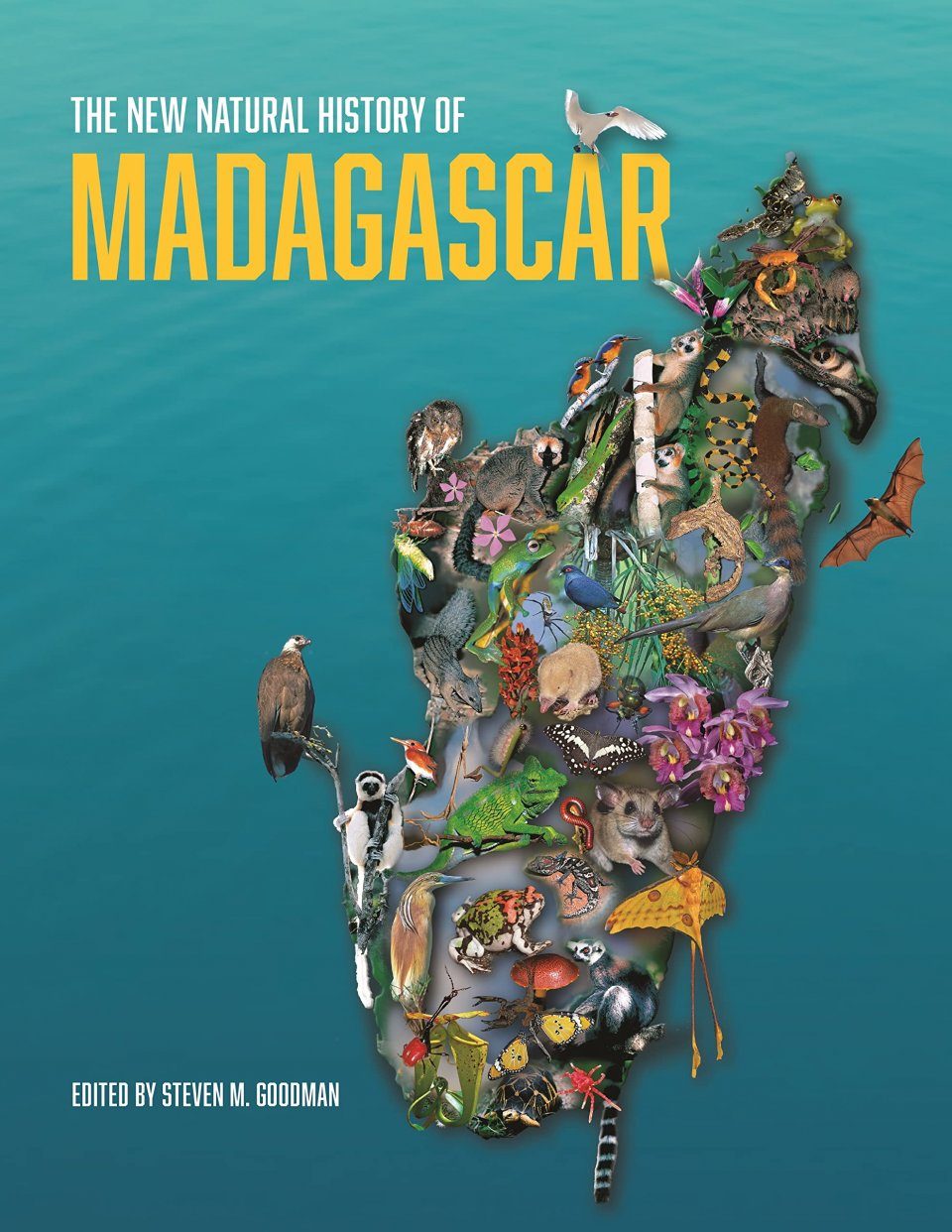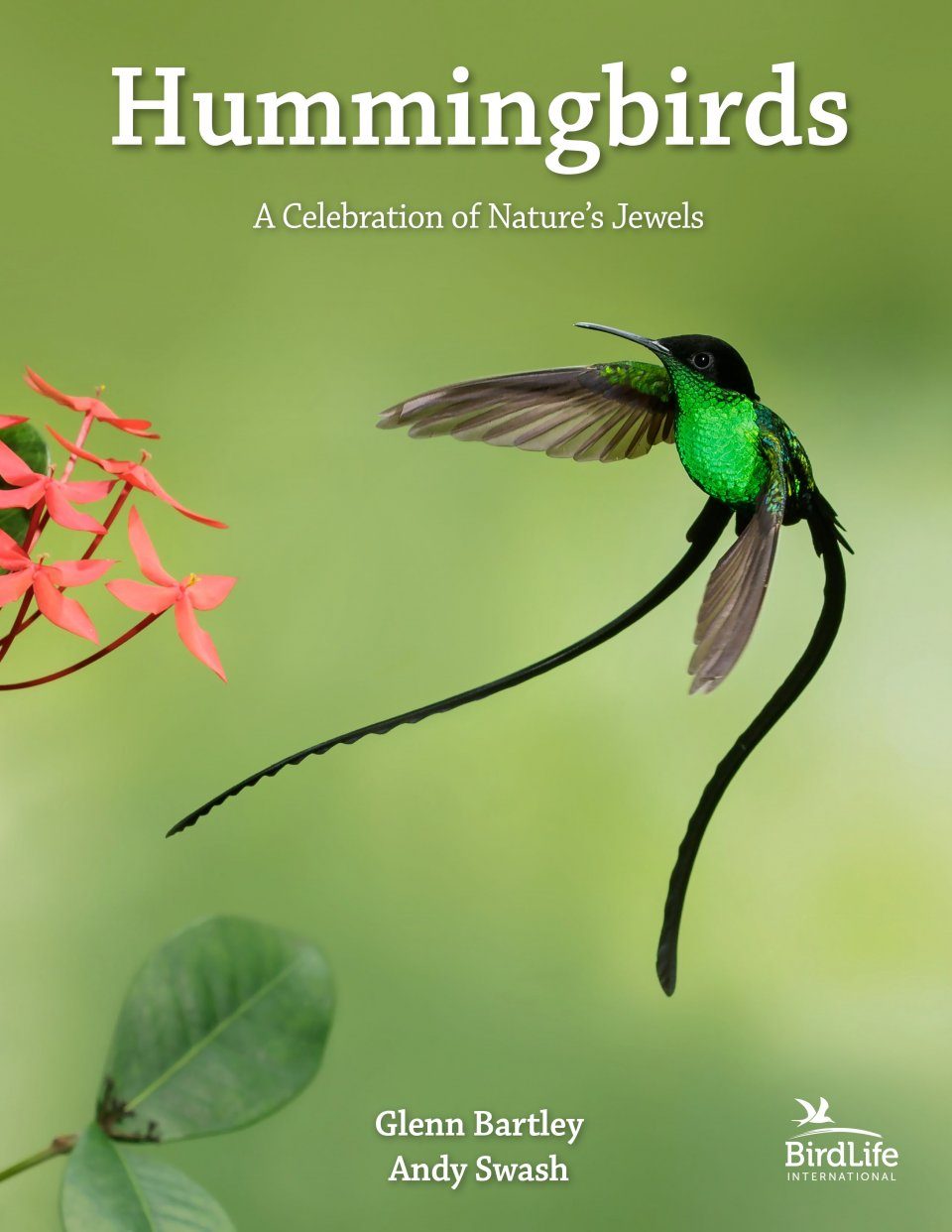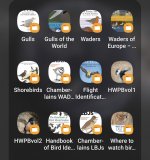-
Welcome to BirdForum, the internet's largest birding community with thousands of members from all over the world. The forums are dedicated to wild birds, birding, binoculars and equipment and all that goes with it.
Please register for an account to take part in the discussions in the forum, post your pictures in the gallery and more.
You are using an out of date browser. It may not display this or other websites correctly.
You should upgrade or use an alternative browser.
You should upgrade or use an alternative browser.
Your most anticipated futures books (3 Viewers)
- Thread starter Melanie
- Start date
More options
Who Replied?Thanks. I must look harder!They are direct from Bloomsbury
I find it astonishing that:
- These are not promoted (or not in anything that I see).
- They are the same price as the printed book.
- They are not available free to anyone who buys the printed book.

I have hard copy and PDF of a number of books, and occasionally opt for digital copy only. The Bloomsbury watermark is only a line on each page at the bottom with your name and purchase date so guess they are too easy to share which might be a reason for high prices - but I agree it would be good for free, or a nominal price, if you have bought the hard copy.Thanks. I must look harder!
I find it astonishing that:
- These are not promoted (or not in anything that I see).
- They are the same price as the printed book.
- They are not available free to anyone who buys the printed book.
My PDF phone library is as attached, all legitimate as I am too wary of viruses etc being bundled in pirate copies. Also a few WildGuides volumes on Kindle. Together with Collins and BWP apps I am building quite a carry everywhere library, gone are the days where you have to wait to get home to consult the books.
Attachments
Andy Adcock
Worst person on Birdforum

In some cases I've seen, e-books are actually more expensive than hard copy versions.Thanks. I must look harder!
I find it astonishing that:
- These are not promoted (or not in anything that I see).
- They are the same price as the printed book.
- They are not available free to anyone who buys the printed book.
Melanie
Well-known member

Who has written this book, which publisher will offer this book and when it will be published?While obviously not useful for birding specifically, the upcoming "Birds of the Mesozoic: An Illustrated Field Guide" definitely has my interest.
I guess when you run out of extant birds to illustrate, you start publishing books on fossil species...
Mysticete
Well-known member

This is the lynx facebook announcement:
"We are happy to announce the forthcoming title “Birds of the Mesozoic: An Illustrated Field Guide” by Juan Benito and Roc Olivé. Due Summer 2022.



Birds are the most diverse tetrapod group today, but they have a rich and complex evolutionary history beyond that of their modern radiation. Appearing during the Jurassic, more than 160 million years ago, birds took to the skies and evolved into a plethora of forms during the Age of the Dinosaurs.


This comprehensive and up to date illustrated field guide, by palaeontologist Juan Benito and palaeoartist Roc Olivé, aims to illustrate in unprecedented detail the staggering diversity of avialans (modern birds and their closest fossil relatives) that lived from the origin of the group until the Mass Extinction that ended the reign of the non-avian dinosaurs 66 million years ago: the Birds of the Mesozoic.
This beautifully illustrated field guide includes over 250 full-colour illustrations covering more than 200 types of bird that populated the world during the Mesozoic Era. In addition to detailed fact files on the diverse avifauna of the Mesozoic, including a description of each species, with information on its name, location, size, period, habitat, and general characteristics, this guide also seeks to explain the origins of the group and their evolution from other feathered dinosaurs up to the origins of modern birds in the Late Cretaceous. It also covers in detail multiple facets of their phylogenetic, morphological, and ecological diversity, and provides an introduction to bird skeletal anatomy and several of the most recent and cutting-edge methods palaeontologists use to reconstruct fossil bird colour, diet, and biology.
Easy-to-use and pleasant to contemplate, this book is a must for both bird and palaeontology enthusiasts!


 "
"
The cover illustration looks pretty good, so I expect the reconstructions to be pretty high quality.
"We are happy to announce the forthcoming title “Birds of the Mesozoic: An Illustrated Field Guide” by Juan Benito and Roc Olivé. Due Summer 2022.



Birds are the most diverse tetrapod group today, but they have a rich and complex evolutionary history beyond that of their modern radiation. Appearing during the Jurassic, more than 160 million years ago, birds took to the skies and evolved into a plethora of forms during the Age of the Dinosaurs.


This comprehensive and up to date illustrated field guide, by palaeontologist Juan Benito and palaeoartist Roc Olivé, aims to illustrate in unprecedented detail the staggering diversity of avialans (modern birds and their closest fossil relatives) that lived from the origin of the group until the Mass Extinction that ended the reign of the non-avian dinosaurs 66 million years ago: the Birds of the Mesozoic.
This beautifully illustrated field guide includes over 250 full-colour illustrations covering more than 200 types of bird that populated the world during the Mesozoic Era. In addition to detailed fact files on the diverse avifauna of the Mesozoic, including a description of each species, with information on its name, location, size, period, habitat, and general characteristics, this guide also seeks to explain the origins of the group and their evolution from other feathered dinosaurs up to the origins of modern birds in the Late Cretaceous. It also covers in detail multiple facets of their phylogenetic, morphological, and ecological diversity, and provides an introduction to bird skeletal anatomy and several of the most recent and cutting-edge methods palaeontologists use to reconstruct fossil bird colour, diet, and biology.
Easy-to-use and pleasant to contemplate, this book is a must for both bird and palaeontology enthusiasts!



The cover illustration looks pretty good, so I expect the reconstructions to be pretty high quality.
John Cantelo
Well-known member
"An Illustrated Field Guide” seems an odd choice of subtitle for a book on Mesozoic birds given we don't actually know what they looked like and can't get into the field to see them!
lgonz1008
Well-known member

Looking at the cover (which looks beautiful), I'm guessing the bird is an Ichthyornis or from a similar group?This is the lynx facebook announcement:
"We are happy to announce the forthcoming title “Birds of the Mesozoic: An Illustrated Field Guide” by Juan Benito and Roc Olivé. Due Summer 2022.


Birds are the most diverse tetrapod group today, but they have a rich and complex evolutionary history beyond that of their modern radiation. Appearing during the Jurassic, more than 160 million years ago, birds took to the skies and evolved into a plethora of forms during the Age of the Dinosaurs.

This comprehensive and up to date illustrated field guide, by palaeontologist Juan Benito and palaeoartist Roc Olivé, aims to illustrate in unprecedented detail the staggering diversity of avialans (modern birds and their closest fossil relatives) that lived from the origin of the group until the Mass Extinction that ended the reign of the non-avian dinosaurs 66 million years ago: the Birds of the Mesozoic.
This beautifully illustrated field guide includes over 250 full-colour illustrations covering more than 200 types of bird that populated the world during the Mesozoic Era. In addition to detailed fact files on the diverse avifauna of the Mesozoic, including a description of each species, with information on its name, location, size, period, habitat, and general characteristics, this guide also seeks to explain the origins of the group and their evolution from other feathered dinosaurs up to the origins of modern birds in the Late Cretaceous. It also covers in detail multiple facets of their phylogenetic, morphological, and ecological diversity, and provides an introduction to bird skeletal anatomy and several of the most recent and cutting-edge methods palaeontologists use to reconstruct fossil bird colour, diet, and biology.
Easy-to-use and pleasant to contemplate, this book is a must for both bird and palaeontology enthusiasts!
 "
"
The cover illustration looks pretty good, so I expect the reconstructions to be pretty high quality.
Also, I'm kind of surprised that we get 2 books in this very niche genre in a decade from each other. The first one being "A Field Guide to Mesozoic Birds and Other Winged Dinosaurs" by Matthew P. Martyniuk in late 2012.
Mysticete
Well-known member

Given the appeal of dinosaurs to some folks and birds to others, it makes sense that it might be profitable to do a book that combines both.Looking at the cover (which looks beautiful), I'm guessing the bird is an Ichthyornis or from a similar group?
Also, I'm kind of surprised that we get 2 books in this very niche genre in a decade from each other. The first one being "A Field Guide to Mesozoic Birds and Other Winged Dinosaurs" by Matthew P. Martyniuk in late 2012.
Personally I would love to see an equivalent volume on Cenozoic birds, which are not as well covered.
lgonz1008
Well-known member

Considering the fossil record we have of early members of each bird family in the Cenozoic era, I'd love such a book, not just for the giant penguins, but also for the ancestors of Motmots, Hummingbirds and other New World families and how they started in Eocene Europe. Seems like a book I'd preorder the moment it gets announced.Given the appeal of dinosaurs to some folks and birds to others, it makes sense that it might be profitable to do a book that combines both.
Personally I would love to see an equivalent volume on Cenozoic birds, which are not as well covered.
Mysticete
Well-known member

And Terror Birds!Considering the fossil record we have of early members of each bird family in the Cenozoic era, I'd love such a book, not just for the giant penguins, but also for the ancestors of Motmots, Hummingbirds and other New World families and how they started in Eocene Europe. Seems like a book I'd preorder the moment it gets announced.
How much more exciting would birding be if the some of the birds you hunted for could also hunt you?

No thanksAnd Terror Birds!
How much more exciting would birding be if the some of the birds you hunted for could also hunt you?
Melanie
Well-known member

Ray Ching New Zealand Bird Paintings
Ray Ching is internationally recognised as one of the world's greatest living wildlife artists. Born in New Zealand, he established himself as an artist in the 1960s, before moving to England where he has spent the majority of his career. He has never lost his interest in his roots, however, or the New Zealand birds that inspired his move into art, and over the last 60 years, he has built up a remarkable collection of paintings of our wildlife. These form the heart of this gorgeous book, which is also accompanied by his own text. Working primarily in oils and watercolours, Ching's works are incredibly detailed with an almost photographic quality. They are slowly built up, layer upon layer, often leaving the under-drawing peeking through the transparent paint. This large-format, lavishly produced book is an impressive tribute to the legacy of one of the most significant wildlife painters of our time.
Ray Ching: New Zealand Bird Paintings
Buy Ray Ching (9781988550237): New Zealand Bird Paintings: NHBS - Ray Ching, Potton & Burton (formerly Craig Potton)
www.nhbs.com
Melanie
Well-known member

There is a new book on cormorants and shags scheduled for 2023
Cormorants and Shags by David Cabot
Cormorants and Shags by David Cabot
Cormorants and Shags
Buy Cormorants and Shags (9780008184742) (9780008184735): NHBS - David Cabot, William Collins (HarperCollins imprint)
www.nhbs.com
Melanie
Well-known member

The New Natural History of Madagascar (2 volumes set) by Stephen M. Goodman
scheduled for October 2022

scheduled for October 2022

The New Natural History of Madagascar (2-Volume Set)
Buy The New Natural History of Madagascar (2-Volume Set) (9780691222622): NHBS - Steven M Goodman, Princeton University Press
www.nhbs.com
Melanie
Well-known member

Hummingbirds by Glenn Bartley and Andy Swash
scheduled for June 2022

scheduled for June 2022

Hummingbirds: A Celebration of Nature's Jewels
Buy Hummingbirds (9780691182124): A Celebration of Nature's Jewels: NHBS - Glenn Bartley, Andy Swash, Rob Hume, Christopher J Sharpe, Robert Still, Jeanne Melchels, Patricia Zurita, WILDGuides
www.nhbs.com
birdboybowley
Well-known member.....apparently so ;)

Ooohhhh, one of my photos is in that 😁😁👍
Users who are viewing this thread
Total: 4 (members: 0, guests: 4)






